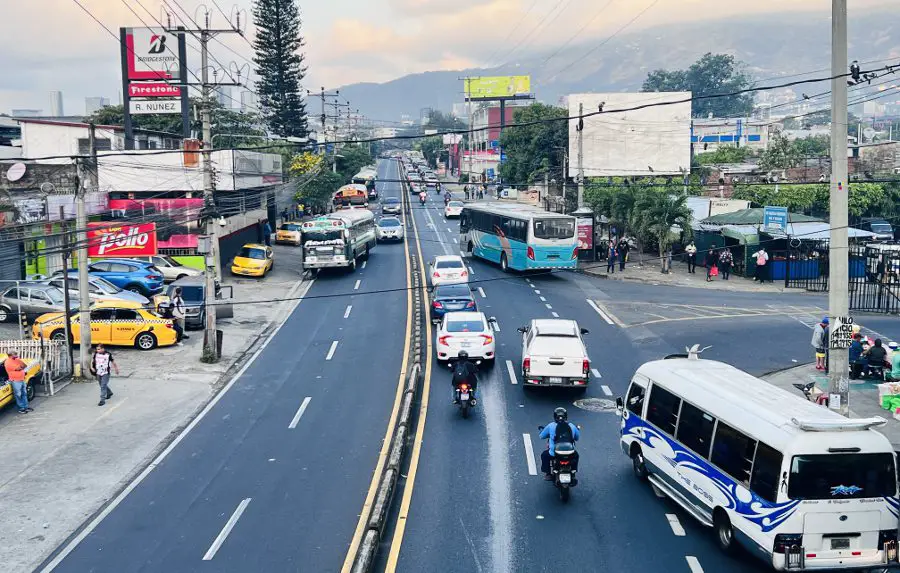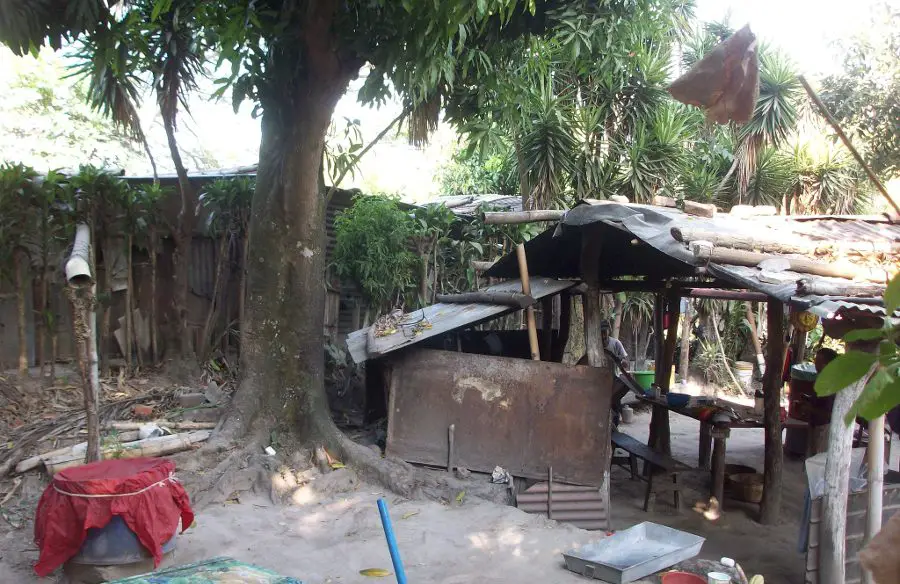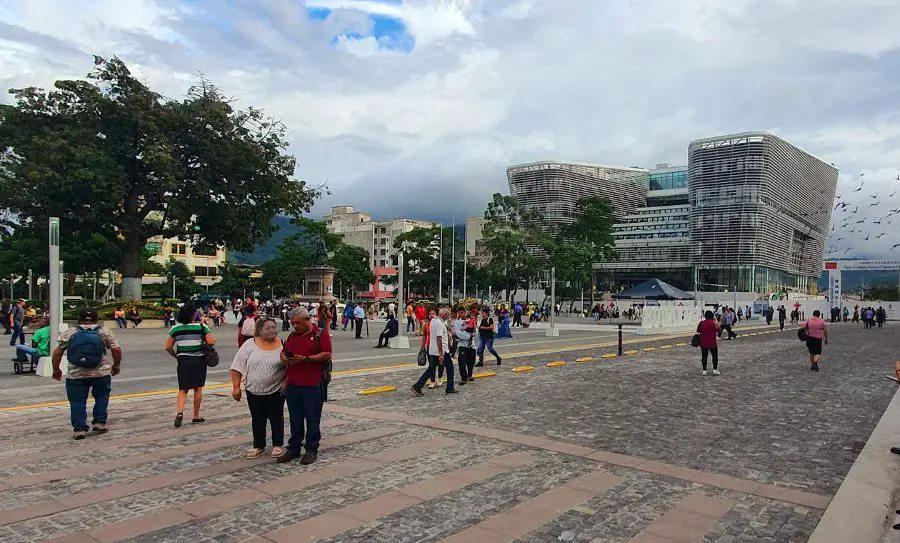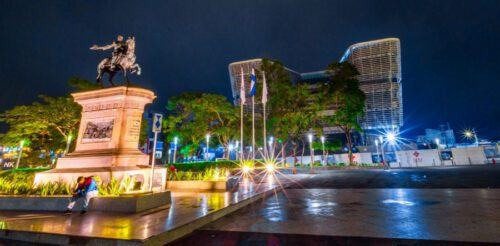Poverty in El Salvador is a complex and pressing issue that has profound implications for the nation’s population. Because of poverty, a significant portion of the country’s citizens grapple with economic hardship, limited access to necessities, and persistent social inequality.
Currently, El Salvador’s poverty rate is 27.2 percent, with 18.4% of Salvadoran households living in relative poverty and 8.8% in extreme poverty.
According to the Central Reserve Bank of El Salvador BCR, a fourth of El Salvador’s population, or about 6.3 million, struggle to meet their daily necessities because of poverty.

What is El Salvador Poverty Rate?
At the national level, EL Salvador’s poverty rate stands at 27.2%, with 18.4% of households living in relative poverty and 8.8% in extreme poverty. The country’s national poverty rate increased by 0.60 percentage points or 2.26% from 2022 to 2023.
| 2018 | 2019 | 2020 | 2021 | 2022 | 2023 | 2022-2023 % Change |
|
|---|---|---|---|---|---|---|---|
| National Poverty | 26.3 | 22.8 | 26.2 | 24.6 | 26.6 | 27.2 | 0.6 (2.26%) ▲ |
| Relative Poverty | 20.6 | 18.3 | 17.6 | 16.8 | 18.1 | 18.4 | 0.3 (1.66%) ▲ |
| Extreme poverty | 5.7 | 4.5 | 8.6 | 7.8 | 8.6 | 8.8 | 0.2 (2.33%) ▲ |
Relative Poverty
The country’s national relative poverty rate rose by 0.30 percentage points or 1.66% from the previous year, increasing from 18.1% to 18.4%.
Relative poverty applies to households whose income is higher than the cost of the basic food basket but less than the cost of the extended basic basket, which is twice the cost of the basic food basket.
Extreme Poverty
Nationally, the extreme poverty rate saw an increment of 0.20 percentage points or 2.33%, rising from 8.6% to 8.8%.
Extreme poverty applies to households whose income is less than the cost of the basic food basket.
SEE ALSO: El Salvador’s Basic Food Basket Cost.
How is El Salvador’s Poverty Rate Calculated?
El Salvador’s poverty rate is determined using the cost of the essential food basket per household as a benchmark.
In 2023, the per capita cost of the basic food basket was $67.67 in urban areas and $44.47 in rural areas. These are the figures used to calculate the current poverty rate.
To estimate the essential food basket cost per household, it uses an average of 3.19 members per family in rural areas and 3.11 members per family in urban locations.
For example, the current Salvadoran basic food basket average for a family of 3.19 in rural areas is $141.86; therefore, the extended basket is $283.72, twice the basic food basket.
($44.47 x 3.19 = $141.86 x 2 = $283.72)
In urban locations, the current average cost of the basic food basket for a family of 3.11 is $210.45. Therefore, the extended basket, which is twice the cost of the basic food basket, is $420.91.
($67.67 x 3.11 = $210.45 x 2 = $420.91)

What is the Rural Poverty Rate in El Salvador?
The rural poverty rate in El Salvador is 28.3%, with 17.1% of rural households living in relative poverty and 11.1% in extreme poverty. This rate decreased by 1.3 percentage points from 2022 to 2023.
| 2018 | 2019 | 2020 | 2021 | 2022 | 2023 | 2022-2023 % Change |
|
|---|---|---|---|---|---|---|---|
| Rural Poverty | 30.0 | 24.8 | 28.5 | 27.0 | 29.6 | 28.3 | -1.3 (-4.39%) ▼ |
| Relative Poverty | 22.9 | 19.6 | 17.4 | 16.6 | 18.8 | 17.1 | -1.7 (-9.04%) ▼ |
| Extreme poverty | 7.1 | 5.2 | 11.1 | 10.4 | 10.8 | 11.1 | 0.3 (2.78%) ▲ |
The rural poverty rate is based on the percentage of Salvadoran households living on less than $283.72 per month, the 2023 Salvadoran poverty criteria for the rural sector.
Compared to the previous year, the current poverty rate in rural El Salvador decreased by 4.39%, with relative poverty experiencing a 9.04% decline. However, the extreme poverty rate increased by 2.78%.
A decline in the overall poverty rate for the rural sector is good news for the country; however, the increment in the number of rural households in extreme poverty is alarming.
SEE ALSO: The Struggles of Living in Rural Areas of El Salvador.
What is the Urban Poverty Rate in El Salvador?
The poverty rate in El Salvador’s urban areas is 26.5%, with 19.2% of these households living in relative poverty and 7.3% in extreme poverty. This rate increased by 1.6 percentage points from 2022 to 2023.
| 2018 | 2019 | 2020 | 2021 | 2022 | 2023 | 2022-2023 % Change |
|
|---|---|---|---|---|---|---|---|
| Urban Poverty Rate | 24.1 | 21.7 | 24.8 | 23.2 | 24.9 | 26.5 | 1.6 (6.43%) ▲ |
| Relative Poverty Rate | 19.2 | 17.5 | 17.8 | 16.9 | 17.6 | 19.2 | 1.6 (9.09%) ▲ |
| Extreme poverty Rate | 4.9 | 4.1 | 7.0 | 6.3 | 7.3 | 7.3 | 0.0 (0.00%) |
The urban poverty rate is based on the percentage of Salvadoran households in urban areas living on less than $420.91 per month, the 2023 Salvadoran poverty benchmark for the sector.
The poverty line for the urban sector is based on households with 3.11 members whose income is less than the cost of the extended basic food basket, which is $420.91 per month.
The latest figures show a 6.43% rise in the poverty rate in El Salvador’s urban areas compared to the previous year. Relative poverty increased by 9.09% from 2022 to 2023, while extreme poverty remained unchanged.
Why is El Salvador a Poor Country?
El Salvador has a high poverty rate due to crime and violence, low levels of education, lack of opportunities, and low Paying Wages.
These issues have impacted and continue to affect the daily lives of Salvadorans looking to escape poverty.
Crime and Violence
Even though today, crime and violence in El Salvador are at the lowest levels in over 40 plus years, the impact it has had on the country’s poverty levels continues.
Crime and violence have been one of the principal reasons the country has the current poverty rate.
Since 1992, the end of the civil war, many families or individuals encountered extortion and other crime-related issues that prevented them from improving their economic situation or getting a proper education.
Furthermore, areas with high crime levels had and continue to have a hard time attracting new businesses or investors; therefore, the unemployment numbers have been and continue to be higher than in safer locations.
Education has also been affected by crime and violence. Fear of crime discouraged parents and children from attending high school and enrolling in universities; therefore, resulting in low education levels.
Many individuals who were unable to receive a proper education as a result of crime and violence struggle to find suitable employment today due to their lack of education.
Yes, compared to previous years, crime and violence in El Salvador are down. However, it will take time for better employment and education resources to reach these areas.
In summary, crime and violence prevented many people from gaining proper employment and education; that continues today, even with improved security.
Low Levels of Education
Low levels of education have helped keep the poverty cycle alive in El Salvador. The most recent Salvadoran Multipurpose Household Survey, released on July 2024, noted that the average schooling attained by Salvadorans at a national level is 7.3 grades.
Also, According to Unicef, less than 50 percent of Salvadorans graduate from the sixth grade. Furthermore, only one out of three complete the ninth grade, and one out of five graduate from high school.
Getting the proper education in impoverished communities is challenging. Many people don’t prioritize education for themselves or their children; furthermore, many don’t have the financial means for getting a higher education.
A big issue with education in impoverished communities is student attendance. Some parents don’t allow their kids to attend school because their parents need them to work to help the family.
With minimal levels of education, these children will miss future opportunities that may help them and their families break free from the clutches of poverty.
Lack of Opportunities
Lack of opportunities is another factor that keeps the Salvadoran poverty cycle going. There are limited options in the country for getting high-paying jobs.
Some employers will hesitate to hire an individual based on the location the person lives. Furthermore, job opportunities near poverty-stricken areas are limited, and they don’t pay as well.
The lack of opportunities for acquiring a high-paying job is not a problem only in impoverished areas; this problem affects all Salvadorans, even those with college degrees.

Low Paying Wages
The highest minimum wage in El Salvador is $365.00 per month; however, to earn this minimum wage, people most likely need a college degree or have another skill, such as being bilingual.
Even if someone living in poverty secures a job that pays the Salvadoran minimum wage, it is insufficient to lift them out of poverty. The current minimum wage in El Salvador is so low that it barely covers the essential cost of living.
These wages get even worse for those with a low level of education or those in rural areas. Low wages are another reason El Salvador has a high poverty rate.
What Should the Government Do?
Now that the country’s security has improved, the government needs to create opportunities for individuals currently living in poverty to get better jobs and get a better education.
Also, the education system needs to change to allow the new generations to get better educated and start critical thinking, so they will likely never live in poverty.
Lastly, the Salvadoran minimum wage needs to increase to levels that allow families and individuals to get ahead financially. The current minimum wages are barely enough to survive.

Poverty in El Salvador remains a formidable obstacle to progress and prosperity. The persistent rise in extreme poverty, especially in rural regions, underscores the urgent need for targeted social and economic interventions.
Overcoming these poverty challenges will not be easy and will not be achieved in a short time frame. Nevertheless, the government must create policies and measures to decrease poverty.

 Downtown San Salvador
Downtown San Salvador

